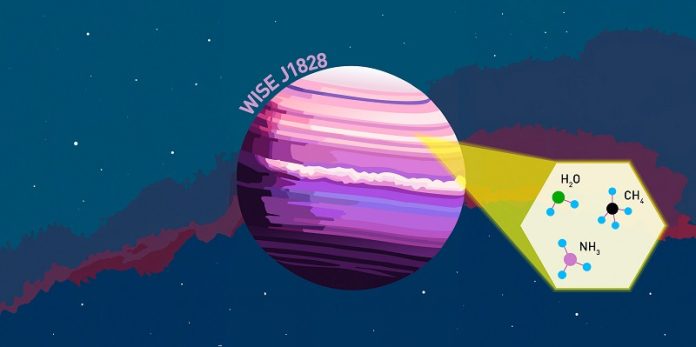
Have you ever wondered how astronomers figure out what’s happening on planets light-years away from us?
It’s a bit like being a detective, but instead of fingerprints, they look for special clues in the light that planets give off or block.
One recent breakthrough has given these cosmic detectives a brand new tool, and it’s all about a gas we find right here on Earth—ammonia.
Scientists have just used the James Webb Space Telescope (JWST) to spot different forms of ammonia in the atmosphere of a really cold space object known as a brown dwarf.
Imagine a brown dwarf as a sort of space ‘tween’—not quite a star, and not quite a planet.
The brown dwarf in question, called WISE J1828, is pretty chilly by space standards, with a temperature about as warm as a hot summer day.
It’s floating out there in the constellation Lyra, which might sound close but is actually 32.5 light years away. That’s so far that we can’t see it without special tools.
This is where the JWST, a super-advanced telescope that orbits far above Earth, comes into play. It has a special camera that sees in infrared light, which is basically heat vision.
With this heat vision, the JWST can see things that are too cold to glow in visible light, like WISE J1828.
When looking at this brown dwarf, the JWST found signs of ammonia.
But not just any ammonia—the telescope could tell apart ammonia made with different types of nitrogen atoms. Most nitrogen has seven protons and seven neutrons and is called nitrogen-14. But sometimes, there’s an extra neutron, making it nitrogen-15.
Why does this matter? Because by comparing how much nitrogen-14 and nitrogen-15 there are in the ammonia, scientists can get clues about how planets (or almost-planets like brown dwarfs) form. It’s like how a detective can tell a lot from the type of mud on your shoes.
On Earth and other planets in our solar system, we have way more nitrogen-14 than nitrogen-15. But on this cold brown dwarf, there’s an even bigger difference—there’s much less nitrogen-15.
This suggests that WISE J1828 didn’t come together in the same way planets in our solar system did.
There are a few ideas about how big gas planets form. One is by slowly gathering up material from the disk of gas and dust that surrounds a young star. The other is by quickly collapsing together under gravity’s pull. The amount of nitrogen-15 can give hints about which method happened.
The JWST’s findings hint that WISE J1828 might have formed more like a star than a planet, in a quick collapse. This matters because it helps scientists understand not just brown dwarfs, but also huge gas planets that orbit far from their stars.
It’s like figuring out a family tree, but for space objects. And with this new ammonia clue, astronomers can start to piece together the life stories of distant planets, helping us understand our cosmic neighborhood better.
This kind of discovery is exactly why the JWST is so valuable. It can pick up details we’ve never seen before, changing the way we look at the universe.
So next time you look up at the stars, remember that there’s a whole lot of detective work going on above you, revealing the secrets of worlds beyond our own.
Follow us on Twitter for more articles about this topic.



